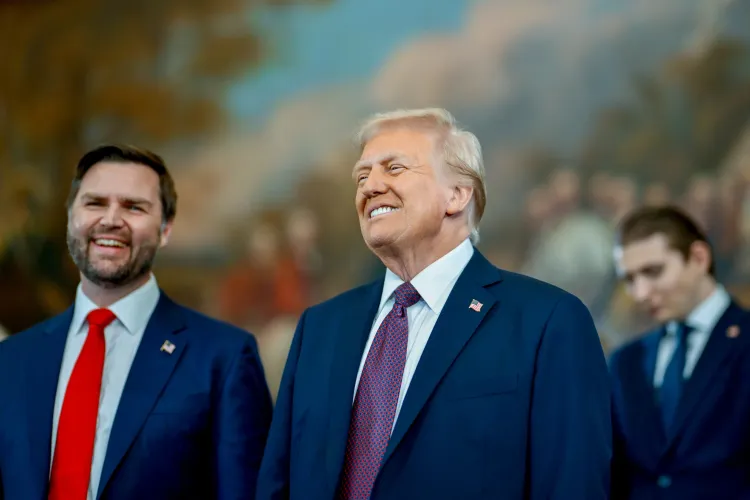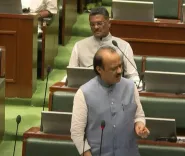Will the US Implement a Standard Tariff Rate on Over 150 Economies?

Synopsis
Key Takeaways
- Standardized tariff rates are set to affect over 150 economies.
- The initial tariff rate is 10 percent, with possible increases.
- Countries not engaged in significant trade with the US are targeted.
- The US government has already notified several economies.
- Negotiations are ongoing, with skepticism about implementation.
Washington, July 17 (NationPress) US President Donald Trump has revealed a strategy to enforce a standardized tariff rate across more than 150 nations and regions, as reported by the media. "It’s going to be the same for everyone in that group," Trump stated to reporters during discussions with Bahrain's Crown Prince Salman bin Hamad Al Khalifa at the White House on Wednesday.
The countries targeted by this new initiative have been characterized by Trump as "not significant" and those that "do not engage in substantial trade."
Back in April, the Trump administration set a foundational tariff of 10 percent on economies not included in bilateral agreements. While Trump has hinted that this baseline could be increased to 15 or 20 percent, he did not provide a specific new rate during Wednesday's comments, according to reports from Xinhua and Politico.
The US government has dispatched notifications to approximately two dozen economies—including the European Union, Japan, and South Korea—detailing the tariff rates that will commence on August 1. This announcement has led to heightened discussions as affected trading partners strive for more favorable agreements.
Nevertheless, analysts remain skeptical about whether the proposed tariff schedule will be implemented as intended on August 1, amidst worries regarding its potential repercussions on the US economy and domestic political landscape.
Countries such as Switzerland and India, which represented over 3 percent of the US trade deficit in 2024, have not yet received formal notifications and are still negotiating with Washington.
On the subject of US-India trade negotiations, Trump conveyed mixed signals, initially claiming "we have another (deal) coming up," but later indicating "we're very close to a deal."
Regarding negotiations with Japan, Trump acknowledged ongoing discussions but expressed uncertainty about the results. "I think we’ll probably live by the letter with Japan," he noted, referring to a previously issued tariff notification.









